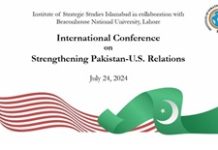On September 24, 2021, Prime Minister Imran Khan while addressing Kissan Card distribution ceremony in Dera Ismail Khan stated that, “If population grows at the current pace, Pakistan may face issues of hunger and poverty.”[1] He showed his serious concerns over the soaring population growth which can lead to challenges of food insecurity, urbanisation and water issues in the country. Pakistan is the fifth largest populated country in the world with more than 220 million inhabitants. The annual fertility rate of a family has reached 3.6 children in 2020.[2] According to UN’s demographic projections for Pakistan, the country’ current population will rise to 245 million by 2030. This coupled with high unemployment and low economic growth pose great risks for the country and many observers depict this situation as a ticking time bomb.
Over the years, successive governments have formulated a number of policies to control the high population growth in the country, however no significant results have achieved. During President Ayub’s era in the 1960s, the government of Pakistan started family planning to control birth rates; unfortunately that policy was not implemented properly and failed to provide desired results. In 1995, the then Prime Minister of Pakistan Benazir Bhutto introduced initiatives to control population by introducing reforms in the health sector by creating Lady Health Worker (LHW). The task assigned to LHW was to raise awareness among the people about the benefits of a small family. The new policy entailed the concept of two children per family, but it faced strong opposition from the religious community of the country including the top clerics. The Supreme Court of Pakistan even proposed a two-child limit on families, but the idea was met with strong opposition from the conservative majority. [3] The Ministry of National Health Services, Regulation and Coordination in 2013 started an initiative to control the birth rates and reduce it from 3.6 percent to 2.2 by 2030.
















